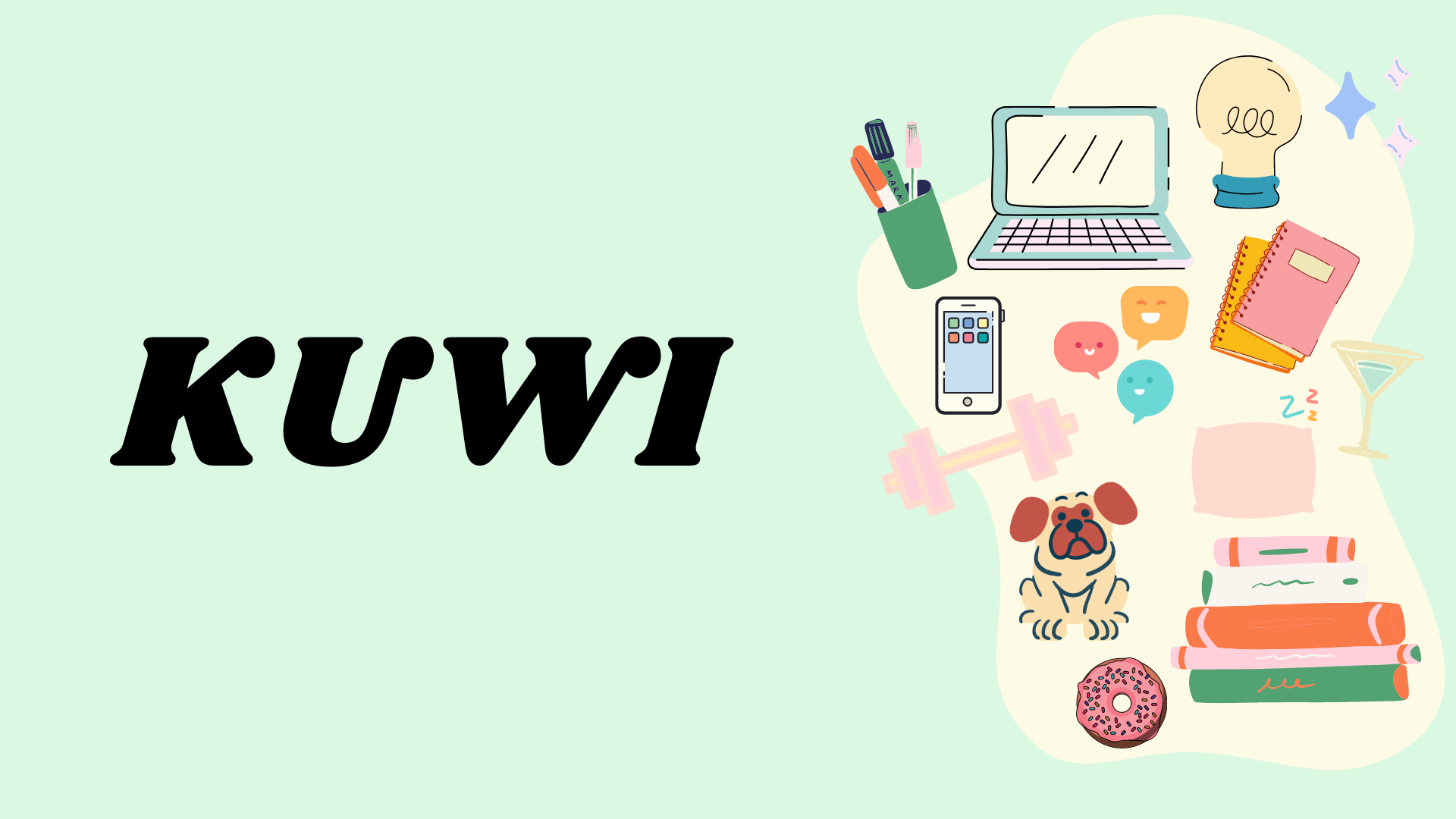KUWI
In the course Digital Marketing I worked alongside a team to create a digital presence for a brand we created from start to finish. Our success was measured through our ability to create a following and sustain engagement.



KUWI is a website that provides young professionals and college students advice on how to manage their time time depending on their lifestyle The advice offered to our users depends on what type of person they are based on a quiz we have programmed on our website. Users take our quiz and are given advice that helps them succeed and relieve stress in a way that still takes into account how they usually manage their day to day workload.

There are 6 distinct personalities our users can receive: The Early Bird, The Social Butterfly, The Procrastinator, The Planner, The Night Owl and The Busy Bee

Our quiz is composed of 12, quick multiple choice questions that asks users about their day-to-day routine, their work habits, and their social life Here's an example: the user answers the 12 questions, and gets social butterfly. from here, the user can view the advice we offer social butterflies. this is just a few of the points that we give them.

We realized we needed to add more content to our website besides the quiz in order to increase traffic and keep our website relevant, so we decided to share weekly blog posts to keep our users engaged We would share weekly blog post updates on our Instagram in order to increase our website’s traffic. This also helped our IG account because it gave us more content to post on that platform

Now this is our Instagram! We had a posting schedule of once a day when we first started, and then several times a week towards the end of the project. Here, we posted a variety of things from team member introductions to individual productivity profiles to featured posts of people who have taken the quiz. Lastly, on our IG: in our IG bio, we had the link to our website, as well as IG story takeovers, of each KUWI personality type.

Through Affiliate marketing, on our website, we have a SHOP button, leading to a site where we have a storefront that utilizes affiliate links from Amazon, and a handful of other sites. These items are items related to school, productivity, anything else a student might find useful.

Originally our team's website did not get approved for adsense because of a lack of "quality content." This was when we decided to add in our weekly blogs, reapply and get approved! We chose to use display ads as in-feed and in-article ads didn't seem to fit our target audience. We also chose to use medium-low ad load advertisements, as well as anchor ads and vignette ads.

Here is our web traffic from this semester long project. As you can see there are a few peaks which resulted from three different "campaigns."

Our Instagram data was interesting for two reasons. First, our posts reached far more individuals than our stories which was interesting because our story shoutouts were much more successful in terms of link clicks. Second, because our website had mostly unique visitors, this means the majority of these visitors from IG were not followers, but rather people who came upon our page.

There are three pillars of strategy we would have taken into account if we were to recreate KUWI. First is expanding our social presence to other platforms. Second is adding more continually updated content to our site earlier. Third is our social media strategy.

We found that for the purposes of website clicks, influencers with fewer followers but a deeper connection with their audience worked much better than individuals with wider but less influence over their followers.
